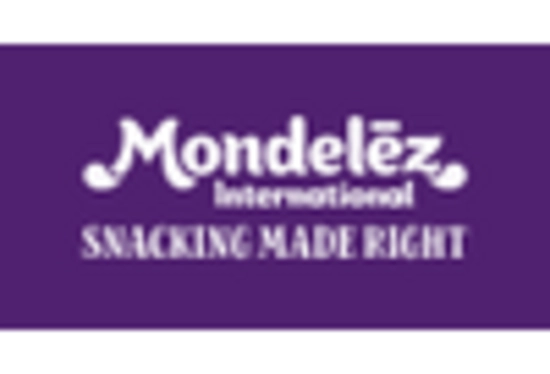The Pallet Displays Market is currently characterized by a dynamic competitive landscape, driven by factors such as increasing retail competition, the need for effective product visibility, and evolving consumer preferences. Major players like Procter & Gamble (US), Unilever (GB), and Coca-Cola (US) are strategically positioned to leverage their extensive distribution networks and brand equity. Procter & Gamble (US) focuses on innovation in display design, enhancing consumer engagement through interactive and visually appealing pallet displays. Unilever (GB) emphasizes sustainability, integrating eco-friendly materials into their displays, which resonates with environmentally conscious consumers. Coca-Cola (US) continues to invest in regional expansion, tailoring its display strategies to local market preferences, thereby enhancing its competitive edge.
The business tactics employed by these companies include localizing manufacturing and optimizing supply chains to reduce costs and improve efficiency. The market structure appears moderately fragmented, with a mix of large multinational corporations and smaller regional players. This fragmentation allows for diverse strategies, yet the collective influence of key players like PepsiCo (US) and Nestle (CH) shapes the overall market dynamics, fostering a competitive environment that encourages innovation and responsiveness to consumer trends.
In August 2025, PepsiCo (US) announced a partnership with a leading technology firm to develop smart pallet displays that utilize AI to analyze consumer behavior in real-time. This strategic move is likely to enhance PepsiCo's ability to optimize product placement and inventory management, thereby increasing sales and improving customer experience. Such technological integration may set a new standard in the industry, pushing competitors to adopt similar innovations.
In September 2025, Nestle (CH) launched a new line of sustainable pallet displays made from recycled materials, aligning with its commitment to environmental stewardship. This initiative not only strengthens Nestle's brand image but also meets the growing consumer demand for sustainable products. The strategic importance of this move lies in its potential to attract eco-conscious consumers and differentiate Nestle in a crowded marketplace.
In October 2025, Unilever (GB) unveiled a digital marketing campaign that integrates augmented reality with its pallet displays, allowing consumers to interact with products in a novel way. This innovative approach is expected to enhance consumer engagement and drive sales, reflecting a broader trend towards digitalization in retail. The strategic significance of this initiative lies in its ability to create memorable shopping experiences, thereby fostering brand loyalty.
As of October 2025, the competitive trends in the Pallet Displays Market are increasingly defined by digitalization, sustainability, and the integration of advanced technologies such as AI. Strategic alliances among key players are shaping the landscape, enabling companies to pool resources and expertise to innovate more effectively. Looking ahead, competitive differentiation is likely to evolve from traditional price-based competition to a focus on innovation, technology integration, and supply chain reliability, as companies strive to meet the changing demands of consumers.

















Leave a Comment